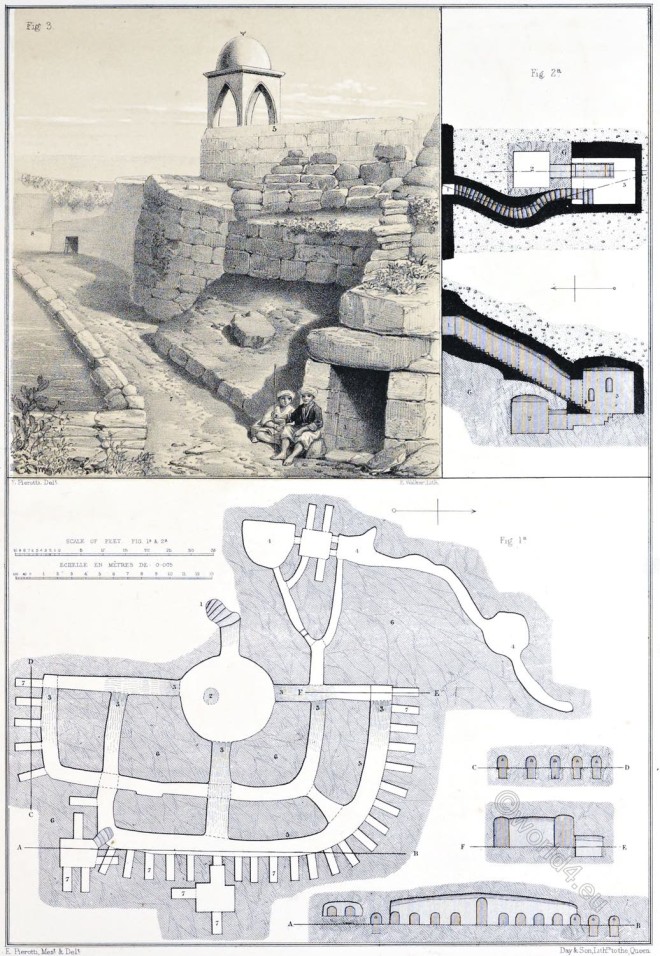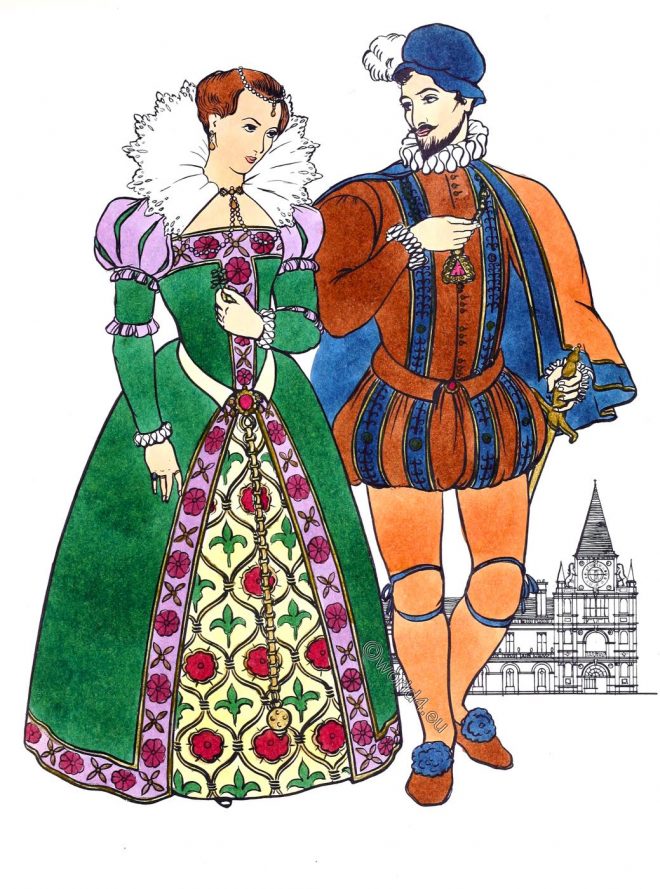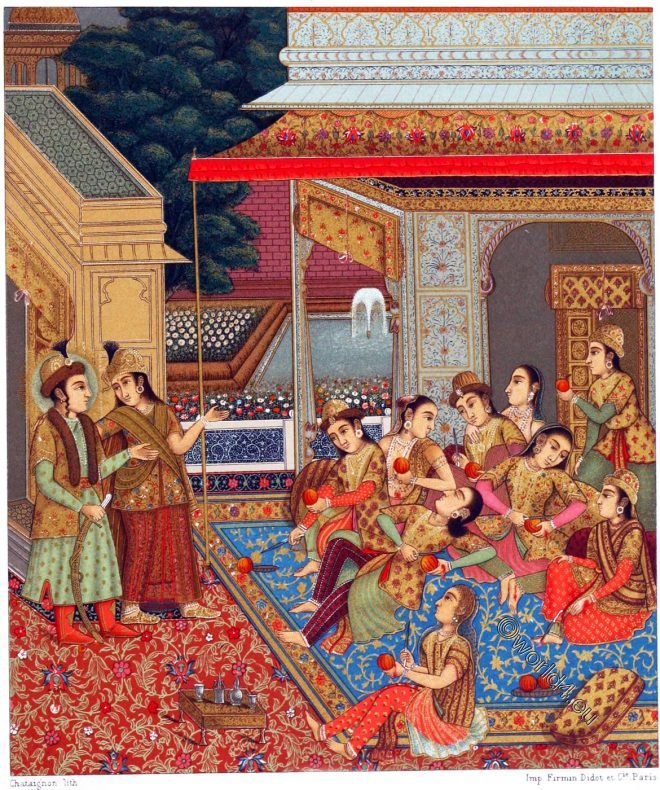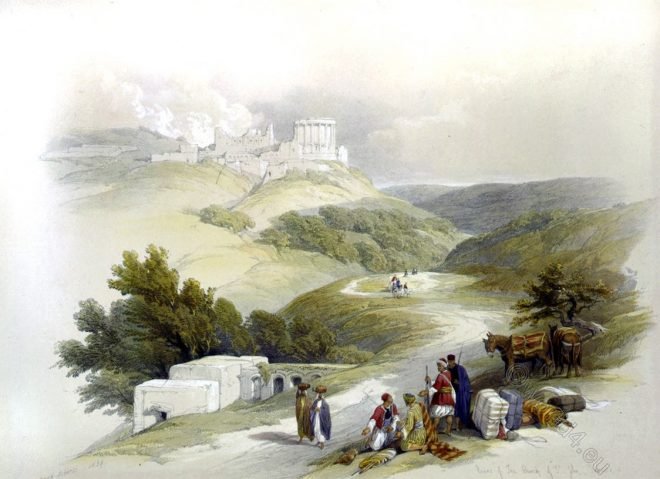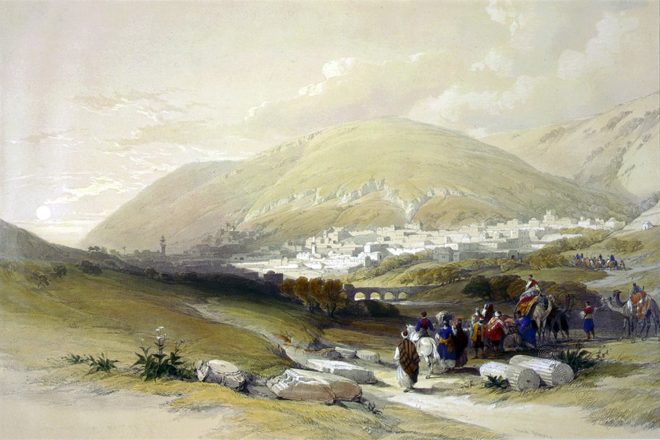This view, taken on the shore opposite Galle, shows a very characteristic feature of the coast vegetation.
Tomb of the Prophets. Tomb of Lazarus at Bethany.
Plan and sections of the Tomb of the Prophets; View, plan and section of the Tomb of Lazarus at Bethany.
Feminine Elizabethan ensemble of the 16th c. England Tudor era.
The woman shown here might very well be the Queen herself.
The Royal Château de Blois, Loir-et-Cher.
The Palace of Blois affords an example of successive changes in the buildings, from the original castle to the period of the Renaissance.
Typical and splendid examples of Elizabethan clothing.
The Elizabethan era is probably regarded by many as the most dramatic and colorful period in the history of western dress.
Inner courtyard of an Indian harem of the Mughal period.
The story about Zuleikha and Joseph. Facsimile of an Indian-Persian miniature depicts Zuleika introducing Joseph to her friends who are busy peeling oranges.
Pompeji. The Pompeian House. Roman architecture.
The Pompeian House. The Atrium. Plan and section of the house of the Pansa.
Ruins of the Church of St. John Sebaste, ancient Samaria.
The ruins of the Church of Saint John the Baptist in the ancient city of Samaria, not far from the modern city of Nablus.
Nablous, the ancient Shechem, one of the oldest cities in Palestine.
View of one of the oldest and most interesting Canaanite cities in Palestine. Nablous contains some fine fragments of its former grandeur.
Entrance to Nablus, once the capital of Samaria.
The Shechem of the Old Testament, and Sychar of the New, once the capital of Samaria, was a city of very high antiquity, and eminent renown.


